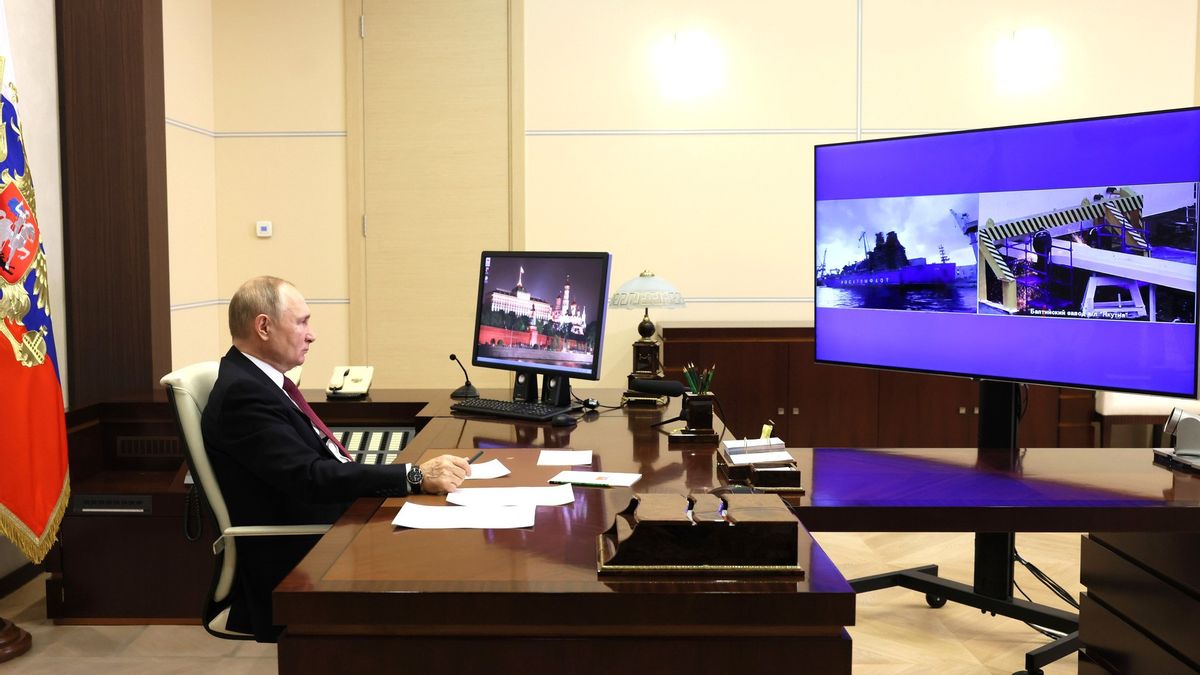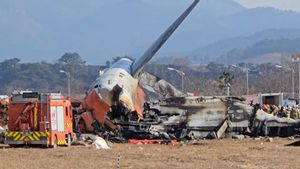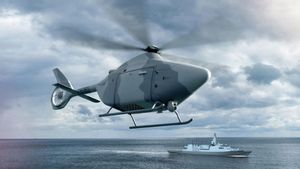JAKARTA - President Vladimir Putin on Tuesday touted Russia's Arctic power at a flag-raising ceremony and the launch of two nuclear-powered ice-breakers, ensuring year-long navigation in the Western Arctic.
Leading the launch ceremony in St. Petersburg via video link from the Kremlin, President Putin said such icebreakers have strategic interests for the country.
"The two ice-breakers were built as part of a major serial project and are part of our large-scale systematic work to revive and equip the domestic ice-breaker fleet, to strengthen Russia's status as a great Arctic force," President Putin said. November 22.
The Arctic takes greater strategic significance as climate change, as shrinking ice sheets open up new sea lanes.
Meanwhile, the vast resources of oil and gas are located in Russia's Arctic region, including a liquefied natural gas plant on the Yamal Peninsula.
President Putin smiled as the Yakutia nuclear ice-breaker was launched into the waters at the dock, standing as the Russian national anthem adorns Russia's flag-raising on the Ural ice-breaker which will start working in December.
Yakutia 173.3 meters (569 ft), with a displacement of up to 33,540 tonnes, could destroy ice up to three meters. The ship will enter service in 2024.
The other two ice-breaker ships in the same series, Arctica and Sibir, are already operational, and another, Chukotka, is scheduled for 2026.
President Putin said the 209-meter super powerful nuclear ice solver known as "Rossiya", with a displacement of up to 71,380 tonnes, would be completed by 2027. It will be able to penetrate four-meter thick ice.
"They are needed for study and development of the Arctic, to ensure safe and sustainable navigation in the region, to increase traffic along the North Sea Route," President Putin said.
"The development of this most important transportation corridor will allow Russia to further open its export potential and build efficient logistics routes, including to Southeast Asia," he said.
President Putin, who ruled in 1999, has strengthened Russia's presence at the North Pole, where Russia has more than 24,000 km (15,000 miles) of coastline that extends from the Barents Sea to the Sea of Okhotsk.
Since 2005, Russia has reopened dozens of military bases of the Arctic Soviet era, modernizing its naval and developing new hypersonic missiles designed to evade US censorship and defense.
Arctic experts say the West will need at least 10 years to pursue the Russian military in the region, if they choose to do so.
The English, Chinese, Japanese, Arabic, and French versions are automatically generated by the AI. So there may still be inaccuracies in translating, please always see Indonesian as our main language. (system supported by DigitalSiber.id)











